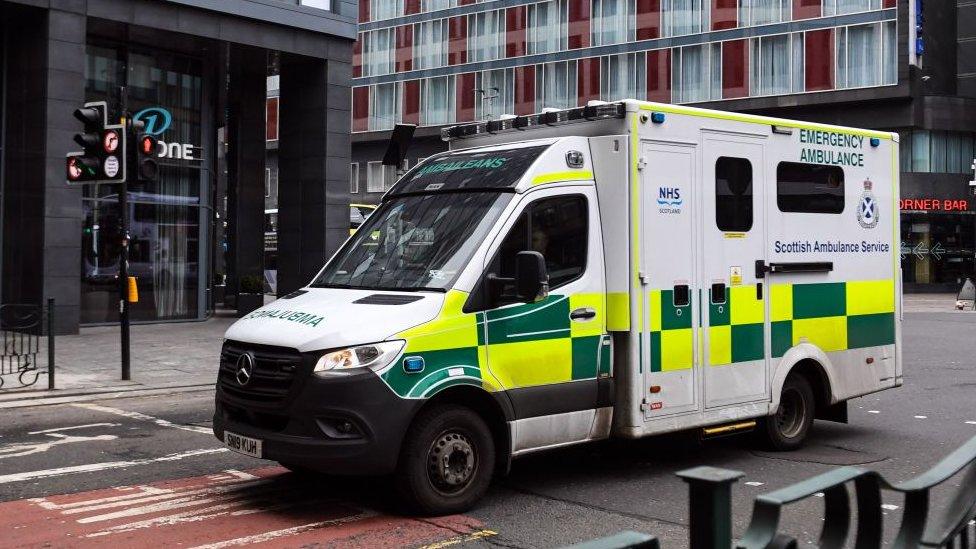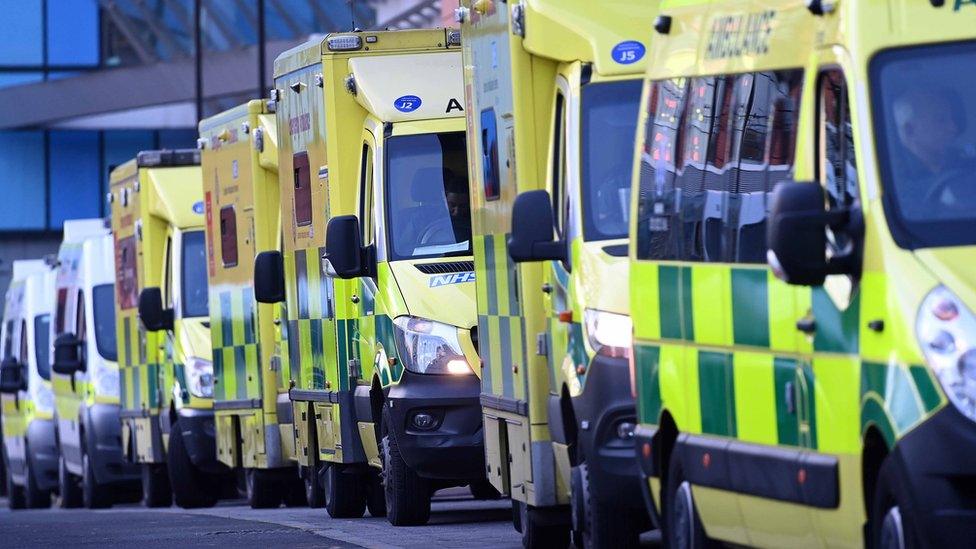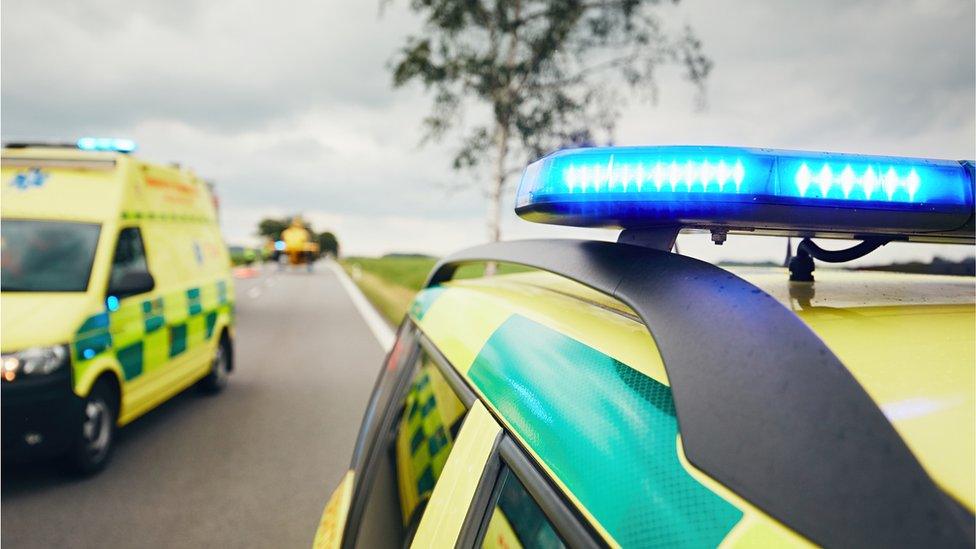Large rise in ambulance waiting times for serious cases
- Published
- comments

The Scottish Ambulance Service operates a colour-coded response system
Cases of people with suspected serious conditions waiting more than 10 minutes for an ambulance have more than doubled since 2019.
Figures for the 2020-21 financial year show that 4,247 people waited between 10 and 29 minutes for an ambulance when their case was deemed to be the most serious.
This figure is up from 1,932 in 2018-19.
However, the number of such cases seen in under 10 minutes also rose sharply.
The Scottish Ambulance Service instituted a colour-coded response system in 2016.
These deemed purple cases to be the most severe - where there is a 10% or more chance of cardiac arrest.
'Lives being risked'
In 2020-21, 10,687 purple cases were seen in under 10 minutes, compared with 8,304 in 2018-19.
The figures were revealed in a response from Health Secretary Humza Yousaf to a written question from Scottish Labour deputy leader Jackie Baillie.
They show the number of cases of waiting times between 30 minutes and an hour almost tripled in the same time period.
In 2018-19, 44 patients were attended to in that time, rising to 125 in the most recent year.
Six patients waited between one and two hours last year, compared with three in 2018-19.
Ms Baillie said: "It's clear that ambulance waiting times are on the rise and that lives are being risked as a result.
"The reports of waits lasting for many hours are horrific and the statistics clearly show that they are not isolated incidents. This is unacceptable."
'Significant pressures'
The Scottish Ambulance Service said its staff were "working tirelessly in these challenging times", but there had been delays as a result of "significant pressures."
A spokesman said response times were affected by a range of factors, including increased infection control measures and the effects of weather.
He said that since adapting its Clinical Response Model, there had been "significant increases" in 30-day survival times for cardiac arrest patients.
The spokesman added: "Response times have increased over the period being reported on, and we are currently recruiting and training additional staff and purchasing additional ambulances to help reduce delays.
"In addition, we are working very closely with hospitals to optimise patient-handover arrangements."
The Scottish government said the ambulance service, like the rest of the NHS, had been under significant pressure as a result of the pandemic.
A spokesperson added: "Despite these challenges and serving some of the most rural areas in the UK, in 2020/21 our crews responded to over 70% of highest priority calls in under 10 minutes and more than 99% in under 30 minutes.
"The ambulance service is carrying out a national review of demand and capacity to ensure it has the resources in place to meet current and projected future demand.
"This review resulted in an additional £10.5m funding announced last year and further investment is planned this year."
- Published8 January 2021

- Published6 March 2019
